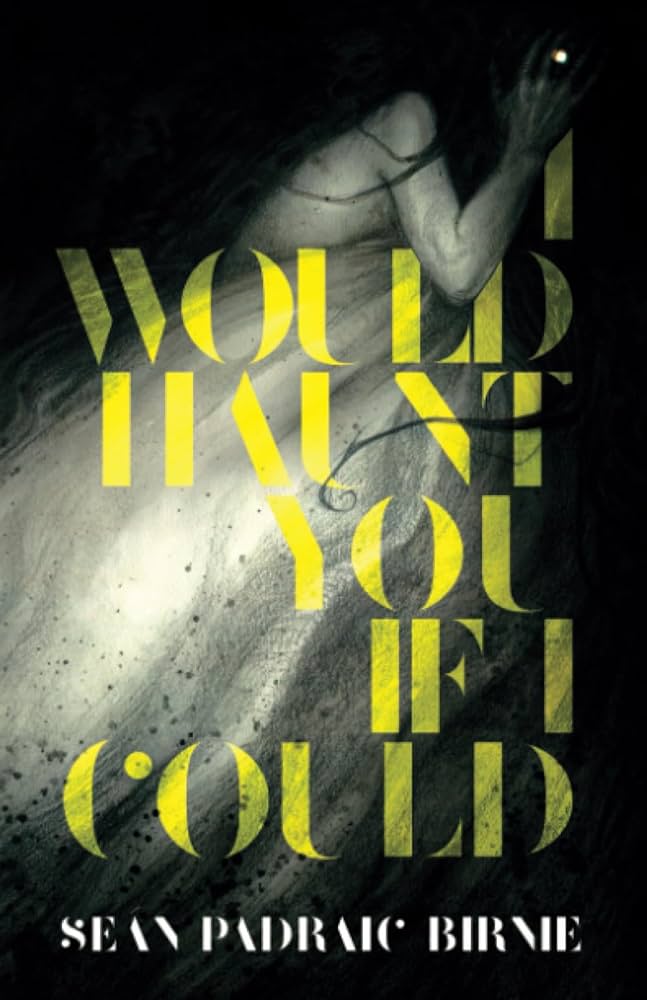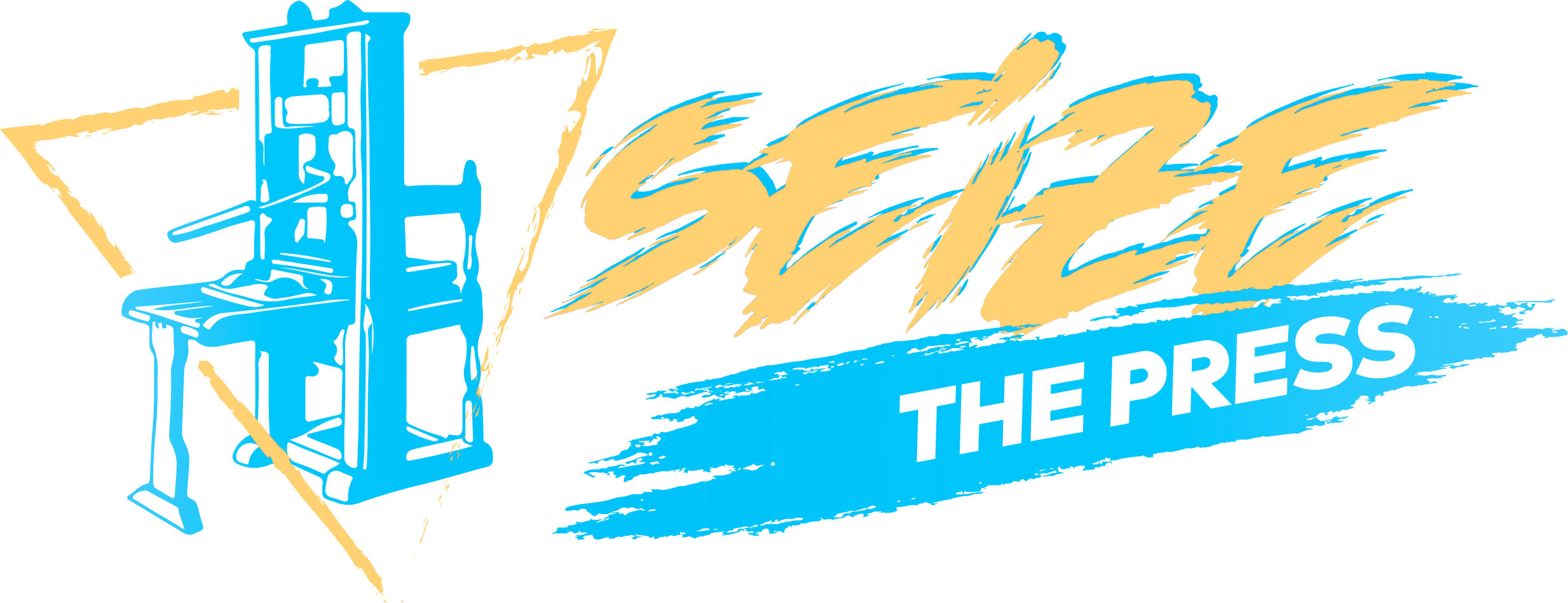There’s a special kind of relationship between the second person and stories of ontological horror. If a narrative is already destabilizing the world, then explicitly and directly situating the reader within it makes it all the more unsettling. I’ve argued that this affect lies at the heart of weird fiction. I can think of no greater example than Seán Padraic Birnie’s I Would Haunt You If I Could, which signals its intentions immediately via that aptly distressing title, and follows through on them expertly, delivering on the uncanny dissatisfaction incumbent in the threat. The fourteen stories here, neatly bifurcated between spectral and bodily abjection, haunt and unsettle the reader unfailingly.

What, though, do we mean by ontological horror? Paul Jessup, in an illuminating essay, distills it into the knowing “[t]hat on the outside something appears normal and unchanged. But somehow, deep down in the bones of it all, it had gone rotten.” He especially points to the work of Shirley Jackson and Kelly Link. Both are excellent touchstones for Birnie; he shares with Jackson, particularly, a devotion to the slow unravelment of domestic dread, an insistence on the symbolic relationship between the haunted home and the haunted psyche (almost all of Birnie’s stories take place in the main character’s home). This is haunting not in the Gothic sense of the weight of the past upon the present or guilt repaid so much as the anxiety and unsettlement of being alive in the present.
Three of the stories first published here feature that threatening, unsettling you: “I Would Haunt You If I Could,” “You Know What to Do,” and “I Told You Not to Go.” The stories themselves are not told in second person, but the titles immediately put the reader on edge. All are excellent, but the last, in particular, is a tour-de-force, a pure distillation of the sadness and domestic unraveling of his work, as a man killed by lightning refuses to leave his widow be. The title story, about a woman unraveling in a rented attic (painted, notably, in an unsettling shade of yellow, remarked upon multiple times), is rendered in a perfectly fussy voice as she descends into paranoia and an almost Ligottian sense of self-annihilation. A remarkable number of the stories focus on attic spaces, cluttered and overwhelming, which one doesn’t need to read too deeply into to see as a metaphor for the collapsing mental health of Birnie’s protagonists.
“You Know What To Do,” about a couple stuck in a liminal not-yet-unpacked mode in the “teeming silence” of their new home, is a fantastic example of Birnie’s delight in Beckettian repetition. This is obvious from the first paragraph of the first story of the collection, “New To All This,” which uses the word “retrospect” five times, but after one hundred-and-eighty-five glorious pages of uncanny repetitions, “You Know What To Do” explicitly draws the reader’s attention to how this rhetorical effect is hitting them:
She rang his phone but it clicked straight to voicemail.
Hi, it’s me. You know what to do.
She tried again.
Hi, it’s me. You know what to do.
A third time.
You know what to do.
Funny, she thought, how the inflection in a recorded voice might seem to change. By the third repetition he was starting to sound annoyed.
No such thing as repetition, she thought. Not in this world.
There’s no better way to call attention to this lack of utter repetition than by relentless textual repetition, and by situating the reader as an active participant –much like that you in his titles!–in shifting meaning, Birnie is drawing us into the productive ambiguity at play in his language. Not only the words themselves but the world at large seems to change into a darker, more ambiguous place.
I’m duty bound to mention Alison Moore and Brian Evenson whenever possible, and Birnie shares an unsparingly precise, deliberate prose style with the two of them, shorn of sentimentality and disinterested in explicability. Like them, Birnie’s work is determined to leave the reader in a space of, yes, ontological unsettlement, but without histrionically explaining to the reader why they should feel that, in the way that so much horror insists on doing. But where Evenson, in particular, avoids interiority in favor of ethical blankness, Birnie revels in the bleedthrough between interior and exterior. The lack of quotation marks in the above passage, which is true of almost all of the stories here, is demonstrative of Birnie eliding differentiation between speech, thought, and narrative. Indeed, an idee fixe of the collection is people unconsciously vocalizing their thoughts, or hearing laughter that they (and the reader) realize belatedly came from them.
A similar collapse of boundaries is at work on the other side of Birnie’s work, in stories that focus on body horror instead of hauntings; essentially situating the ontological horror within the literal interior of the protagonist. For all their bodily deconstruction, they’re more likely to reveal an internal emptiness than buckets of blood. “Like A Zip” concerns a woman who (and it pains me to even type this) finds that pulling a hangnail allows her to physically deconstruct herself, but even here her mental state is as important as the physical destruction, the hangnail an obsessive fixation, an intrusive thought to worry away at. “Holes” finds a man with literal voids sprouting throughout his body. In “New To It All,” a man’s new girlfriend is a biter, able to inexplicably (and bloodlessly) remove and replace his flesh, inducing both physical and spiritual sedation, although she “never quite put everything back,” rendering his body itself a site of ontological drift. The man’s “wondering without urgency” sets the mood for the collection at large, full of characters adrift and unsettled, but full of such ennui and depression that they aren’t able to muster much enthusiasm for change or escape from their fugue state.
I Would Haunt You If I Could came out in 2021, and one of the benefits of reading it years later is that I can trace out which themes and approaches Birnie has continued to polish and develop in his later work. “Out of the Blue,” about a man whose dead father reappears in his home, now the man’s home, is one of the weaker stories in the collection, with an uncharacteristically sentimental conclusion, but his story “A Knock,” published in the unstinting journal ergot., jumps off from almost the exact same point–a man appears in the narrator’s dead father’s house, which is now the narrator’s house –but shears off the softer points of “Out of the Blue,” reveling instead in the uncertainty of identity: the visitor makes use of all of the father’s things, but the narrator does not know him. This theme of aloof parents (“When he died, my father left me his house and the silence in his house”) and distant, inscrutable children also percolates through “Nubbins,” in Interzone, which follows on, inversely, from the body horror in “Holes,” in ways obvious from the title, but also from “Hand-Me-Down,” a story that makes expert use of the unheimlich of a baby monitor.
Some people have more of a fondness for authors with a scattershot, ever-changing approach to genre and theme, but my favorites are those who work in (surprise) repetition, finding points of interest in variations on a theme. This is especially true for a writer like Birnie, where worrying away obsessively feels so thematically apt. I Would Haunt You If I Could is a masterful rondo of weird fiction, with its unsettling refrains and ontologically-troubled variations, and we can only hope it’s the first of many from Birnie.

Zachary Gillan
Zachary Gillan is a critic residing in Durham, North Carolina. He blogs infrequently at doomsdayer.wordpress.com and tweets somewhat more frequently at @robop_style. His reviews have appeared in Strange Horizons and Ancillary Review of Books, where he’s also an editor.
